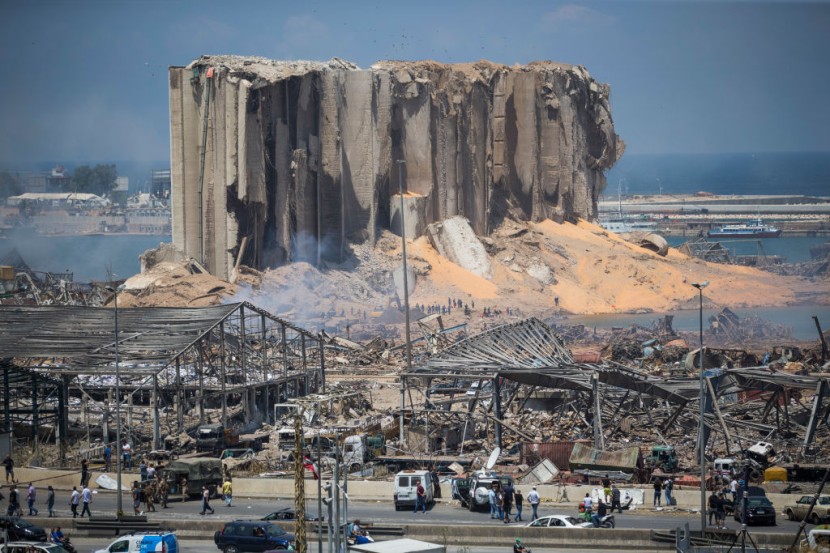
A large explosion in Lebanon's capital, Beirut, has put an end to at least 100 lives and injured more than 4,000 others, as stated by the health minister.
The deadly blast in Beirut was identified to be caused by ammonium nitrate, which is an odorless crystalline substance commonly used as a fertilizer that has been behind a number of terrorist attacks and industrial explosions over the decades.
In the 1995 Oklahoma City attack, two tons of ammonium nitrate was used to create the explosive, which destroyed federal building, killing 168 people, and the Taliban has widely used this substance in improvised devices.
As stated by experts, the recent fire in Beirut started after a welder sparked that possibly inflamed the highly reactive substance, which caused an explosion that was equivalent to three kilotons of TNT, leaving at least a hundred of people dead and causing injuries to thousands more, Daily Mail reported.
At the time of the explosion, about 2,750 tons of the highly reactive chemical was held in the warehouse, the intensity of the explosion was equivalent to a 3.5 earthquake.
According to Dr. David Caldicott of the Australian National University, the death and injury caused by the explosion would have come in several phases.
Primary injuries are blast-related, these are caused by the overpressure wave that interacted with the hollow space in the victims; bowel injuries are prevented, and people with lung injuries often survive but this type of injury is deadly afterward. Secondary injuries are results of flying debris. Tertiary injuries are mostly the consequences after a victim has been thrown by the blast, and quaternary injuries include inhalation.
Read also: COVID-19 Cases Blow Up in Countries Previously Praised for Effective Response to Pandemic
According to The Guardian, ammonium nitrate when incorporated with fuel oils generates a powerful explosive that is commonly used in construction industries, but the deadly power it could produce has been exploited by rebel groups to produce bombs.
Including the Oklahoma City attack in the US, the chemical has been used in several IRA bombings in the UK.
The April 1993 Bishopsgate attack, leaving 40 casualties and a crater that is 40ft-wide, was reportedly caused by an explosive produced from ammonium nitrate.
In 1996, a 3,300lb bomb in Manchester was planted by the IRA that injured 2,000 individuals, but no reported death cases because of a phone warning about an hour before the explosion.
Other fertilizer bombing includes one on the City of London Baltic Exchange building, which was hit by a one-ton bomb situated by the IRA in 1992, killing three people.
In agriculture, ammonium nitrate fertilizer is administered in granule form and dissolves rapidly under moisture which allows nitrogen to be discharged into the soil.
As stated by Jimmie Oxley, University of Rhode Island chemistry professor, on normal storage state and without the presence of extremely high temperature, ammonium nitrate is difficult to ignite.
Oxley articulated that basing on the footage of the explosion, where black smoke and red smoke could be seen signified that the reaction was incomplete.
Moreover, Oxley assumed that a small explosion was present that initiated the reaction of the chemical, not knowing if that was an accident or something done on purpose.
That was because ammonium nitrate is an oxidizer that escalates combustion and enables ignition of other substances, but is not very inflammable itself.
© 2026 HNGN, All rights reserved. Do not reproduce without permission.








